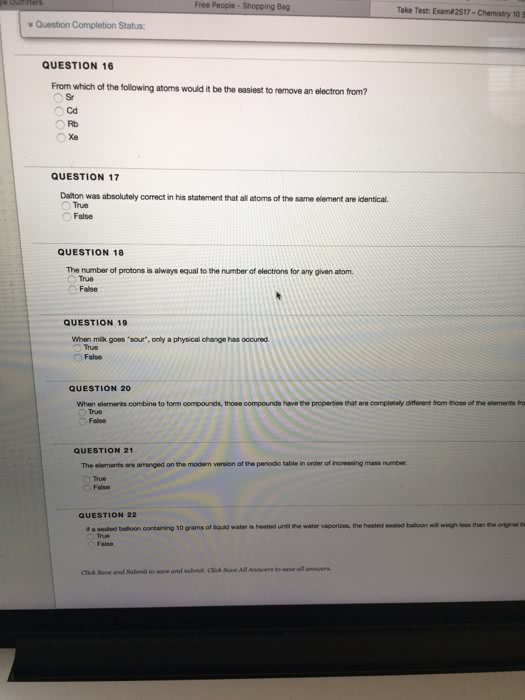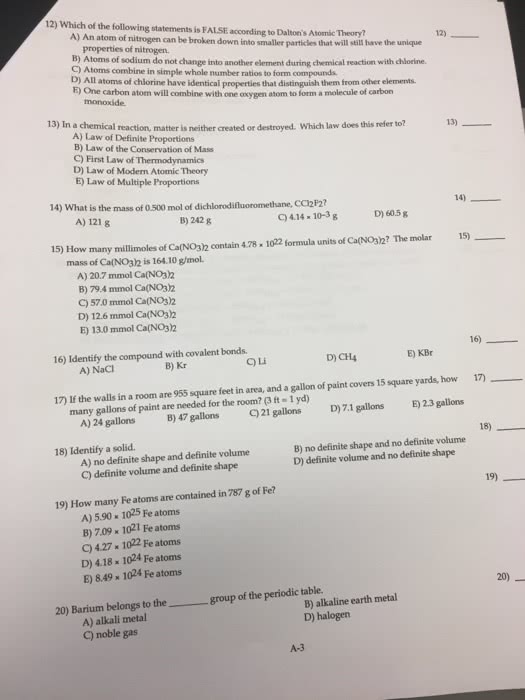CHEM 110 Lecture Notes - Lecture 5: Plum Pudding Model, Ernest Rutherford, Atomic Number
Document Summary
Modern version: all matter is made up of small, neutral particles called atoms. There are 114 different types of atoms already known. The oxygen molecules we breath are o2: compounds are also pure substances, but are made up of atoms of different elements, oxygen (o) and hydrogen (h) are atoms/elements; water (h2o) is a compound. Atoms of a given pair of elements could combine in different proportions and produce different compounds. e. g: n (nitrogen) and o (oxygen) 1 : 1 no nitric oxide, colourless gas. 1 : 2 no2 nitrogen dioxide, brown gas. 2 : 1 n2o nitrous oxide, colourless gas (laughing gas) When n and o combine, they can produce three different pure substances (compounds) each with its own distinct set of chemical and physical properties but made up from the same two elements. Atoms are neutral therefore there must be a positive component. Each shell contains a fixed number of electrons.




